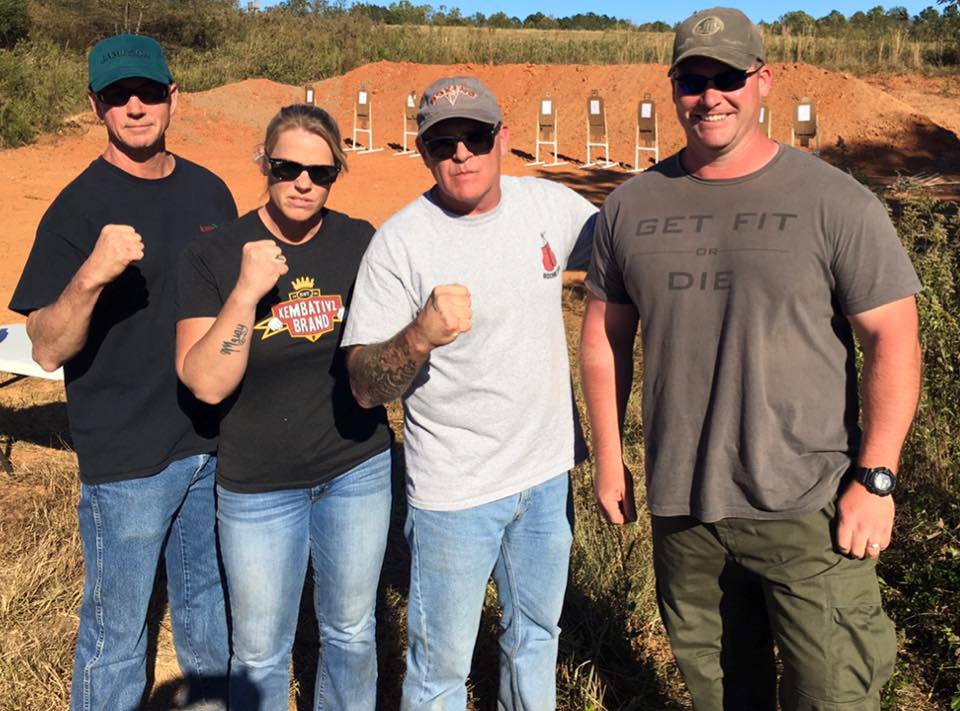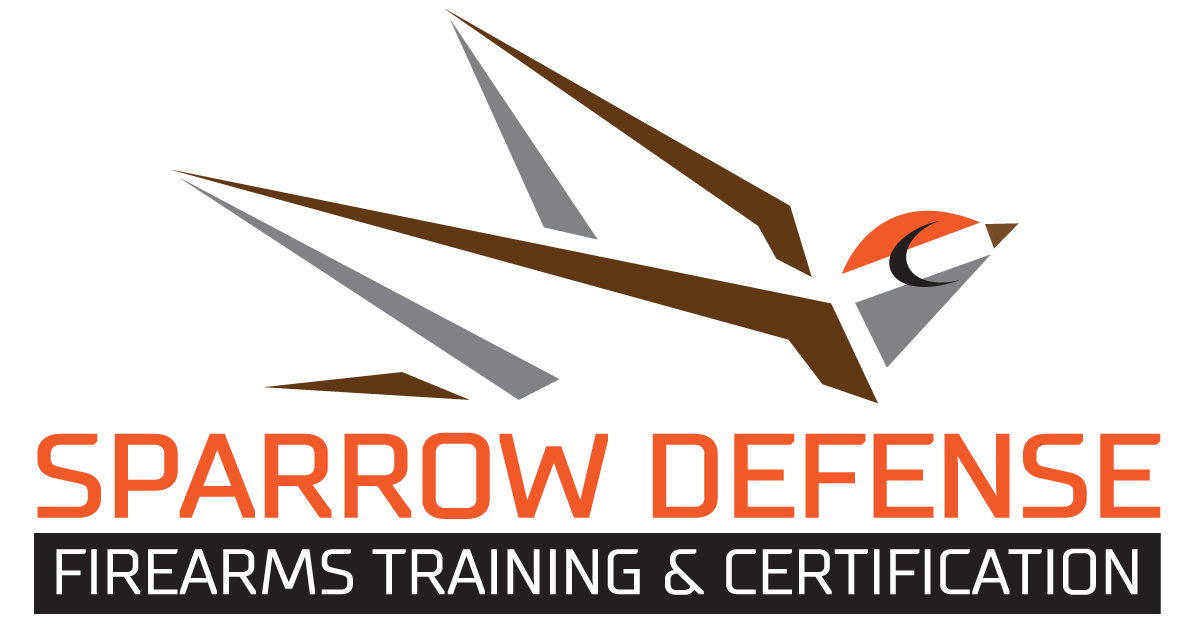
Combative Pistol with Kelly McCann / Kembativz Brand
On October 22nd, Shane Gosa and I attended the two-day Kembativz Brand Combative Pistol course taught by Kelly McCaan. Kelly retired as a Major from the United States Marine Corps, serving from 1980-1990. Among his other achievements, he standardized hostage rescue tactics and equipment during his time in service. After leaving the USMC, he founded the Crucible, which provided training to military and law enforcement units. After 20 years at the Crucible, he founded the Kembativz group in 2012 and began training a civilian market under that banner.
I hadn’t trained with Kelly prior to this class, but was interested for a number of reasons. Kelly has been running red dot optics on his pistols since they were created. He has more time behind an optic-equipped pistol than anyone else I’ve trained with. It was an excellent opportunity to run and evaluate my own RMR-equipped Glock 19. Kelly also blends combative skills such as edged weapon work, batons, pepper spray, and empty hand techniques into his shooting. Many instructors treat the firearm like it exists in a vacuum. Everything is a shoot scenario that occurs with a perfect sight picture well outside intimate space distance. That training fails to address confrontations in which you’ve been ambushed, or in which you’re not legally justified in using deadly force. The Combative Pistol course gave students use of force options to use as the situation warranted.
The first day began with a discussion of the need for intermediate force options in conjunction with the pistol. Kelly demonstrated how presenting a gun or knife preemptively or before legally justified diminishes the unarmed capacity. Rather than getting the gun in hand as the first action in any conflict, he advised keeping hands free to strike until a lethal option was necessary. According to Kelly, most people fail in this step because they’re not confident with their ability to defend themselves without a firearm. That lack of confidence is a byproduct of doing things that are convenient on the range, rather than making training realistic and blending use of force options into each scenario. Not every problem was a shooting problem, and training needed to reflect the volatile nature of violent confrontations.
That moved us into the next teaching point of carrying your firearms and equipment in a system that is consistent and appropriate for the environment. Swapping between multiple carry positions or methods confused a person’s motor memory, or the neural pathways that get your hand onto the gun and the gun on target. A better solution would be to find a carry method that works for you and refine your skill with it.
Part of Kelly’s course addressed the concerns of law enforcement instructors. Specifically, he spoke to the time constraints and equipment limitations for the average LEO on the street. He modeled methods of making the training focused and realistic so that LEOs could function at the highest level during a deadly force encounter. Training should involve high duress with no time limits, rather than the minimally stressed yet timed conditions usually found on a flat range during qualification courses. That’s a departure from the methodology generally found on law enforcement ranges, where instructors focus on getting recruits to pass a specific set of timed standards at specific distances.
When we arrived on the range, one of the first things we noticed was that the targets were covered in shirts to hide the scoring areas. We’d continue to work that way throughout the entire course so that students began to search for reference points on the clothing, rather than an A-zone.
The shooting exercises began with cold shots to establish student ability at 25, 15, 10, and 5. We worked through the draw technique, clearing our weapons from concealment, and getting good hits on target. Instruction was given for both Appendix and Strong Side Hip methods of carry. Much of the first day was spent cleaning up the fundamentals and developing a smooth presentation to the target. Kelly teaches a thumbs forward grip to get the bone structure of the arm behind the gun. He also spends a decent amount of time reinforcing trigger control and the concept of sear reset. Later in the day, we trained on strikes and kicks using palms, knees, elbows, and the head. It was a full day, after which we went as a group to a local Irish pub for a few drinks post-training. The Kembatives Brand folks like to socialize with the students to cultivate fellowship.
The second day began incorporating some divided attention tasks into training. Kelly uses the term “position” rather than “stance” when he reviews the fundamentals. His program reinforces that point by making students work from a “startled cue”. He’d give a series of directions such as turning in one direction, facing backwards down range, picking something up off the ground, or looking at the person next to you on the line. From there, the command to fire would occur in mid-motion. Students were encouraged to activate the gun regardless of their footing, rather than beginning with a perfect pistol match stance. Later, we began striking pads prior to the cue to fire.
The course moved into shooting from retention positions while defending the weapon. Students used their non-firing hands to clear ground, push the target off line, or make distance. The firing in this case was not sighted, and occurred rapidly with minimal warning. The option of a pelvic girdle shot was discussed. This was then worked as a transition from OC / Pepper spray to a firearm when the non-lethal force option failed.
From there, we moved into target discrimination drills. Various geometric shapes, colors, and numbers were placed on the targets. The instructors would call a stimulus, and the shooters would turn from the startled cue position they were in at the time, scan the target for the matching stimulus, and engage as necessary. The targets were switched multiple times so that you couldn’t game the exercise. The focus was still on accuracy at your best speed. Processing information was critical to success, as many times the scenario didn’t call for any shooting.
The complexity of the drills continued to increase throughout the day. It ended with a multiple target exercise that required engagement of targets in rapid succession at various ranges. The shooter engaged a target at retention distance with non-sighted fire, transition one-handed to a near range target, and then side-stepped to engage a target at 15 yards. In closing, there was a course debrief, some pretty cool give-away gifts, and course certificates.
I thoroughly enjoyed the course and spending time on the range with the Kembativz Brand folks. Most of the students in the class were coming from prior combatives training, but had a limited degree of firearms training. Many Kembativz Brand courses focus on unarmed or non-firearms courses. For example, Kelly has a specific course on how to use sticks/batons for defense. While many of the folks attending the class had taken instructor development courses with Kelly and crew in the past, one of them needed to borrow a holster prior to class as he’d never worked from concealment. While that mixed bag of skill sets can easily destroy the continuity of a course, this one moved smoothly. With three instructors present, everyone worked at their own pace and developed their own skills. I received constant feedback from the staff on running my RMR pistol. I also had the opportunity assist with instruction on the range and run some students through drills, as I was attending with the goal of incorporating some of the content into training at my agency.
I’ve been to many different courses over the past twenty years. This is one of three courses that addressed the use of intermediate force options in conjunction with a firearm. The other courses were Craig Douglas’ Extreme Close Quarters Concepts (ECQC) and Dennis Martin’s Enhanced Performance in Conflicts (EPIC). Kelly’s methodology is most similar to Dennis Martin’s preference for powerful strikes and blows to disorient your opponent, rather than the grappling and jiu-jitsu favored by Craig Douglas. Of the three classes, Kelly’s blended more force options into the content, such as edged weapons, pepper/OC spray, strikes, and batons. It was an excellent overview of what equipment a person could work into their everyday carry loadout. Kelly’s course was also more accessible to law enforcement officers on uniform patrol, who need to do high intensity training with constraints on time, budget, and resources.
Finally, this wasn’t a high stress course. The atmosphere on the range was casual, though there was a definite expectation of performing all tasks safely. I don’t recall a single incident of unsafe conduct on behalf of the students or the instructors. Also, in spite of Kelly’s experience, the course was blessedly free of war-stories and “been there, done that” yammering that eats up actual training time. Anecdotes and stories took place over some beers and food after the class, but never with a superior attitude from any of the staff.
I’ve been fortunate to train with a number of good folks, and this continued that trend. I’d definitely recommend training with Kembativz Brand if they travel to your area.
